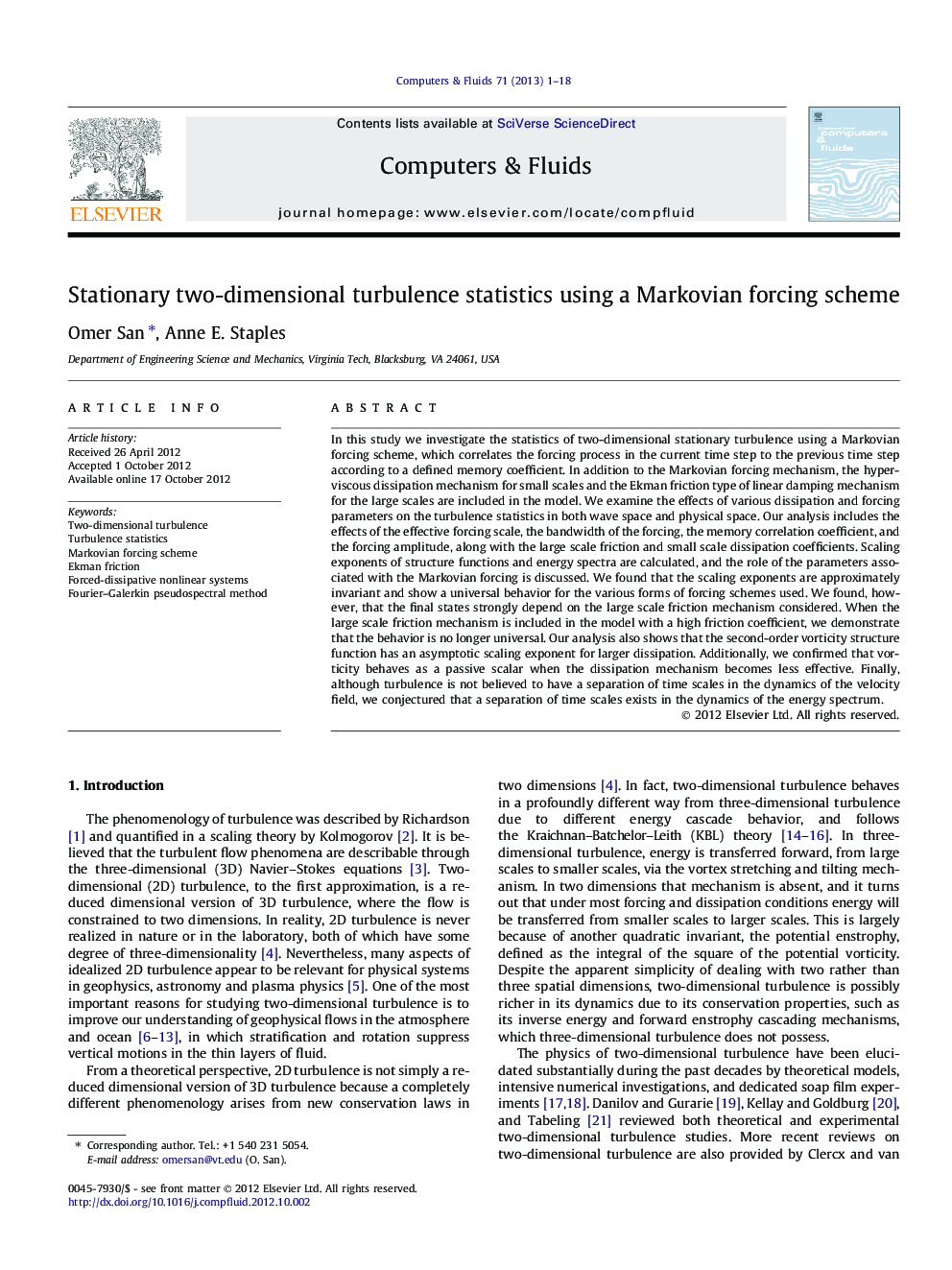| Article ID | Journal | Published Year | Pages | File Type |
|---|---|---|---|---|
| 756693 | Computers & Fluids | 2013 | 18 Pages |
In this study we investigate the statistics of two-dimensional stationary turbulence using a Markovian forcing scheme, which correlates the forcing process in the current time step to the previous time step according to a defined memory coefficient. In addition to the Markovian forcing mechanism, the hyperviscous dissipation mechanism for small scales and the Ekman friction type of linear damping mechanism for the large scales are included in the model. We examine the effects of various dissipation and forcing parameters on the turbulence statistics in both wave space and physical space. Our analysis includes the effects of the effective forcing scale, the bandwidth of the forcing, the memory correlation coefficient, and the forcing amplitude, along with the large scale friction and small scale dissipation coefficients. Scaling exponents of structure functions and energy spectra are calculated, and the role of the parameters associated with the Markovian forcing is discussed. We found that the scaling exponents are approximately invariant and show a universal behavior for the various forms of forcing schemes used. We found, however, that the final states strongly depend on the large scale friction mechanism considered. When the large scale friction mechanism is included in the model with a high friction coefficient, we demonstrate that the behavior is no longer universal. Our analysis also shows that the second-order vorticity structure function has an asymptotic scaling exponent for larger dissipation. Additionally, we confirmed that vorticity behaves as a passive scalar when the dissipation mechanism becomes less effective. Finally, although turbulence is not believed to have a separation of time scales in the dynamics of the velocity field, we conjectured that a separation of time scales exists in the dynamics of the energy spectrum.
► The statistics of two-dimensional stationary turbulence are investigated using a pseudospectral scheme. ► Large scale friction, small scale dissipation, and Markovian forcing mechanisms are included in the model. ► The effects of a large range of physical settings into the turbulence statistics are systematically analyzed. ► We found that the statistics strongly depend on the large scale friction mechanism. ► It is also shown that a separation of time scales exists in the dynamics of the energy spectrum.
